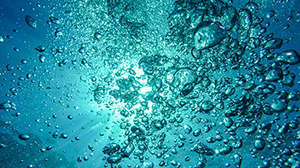
|
 For Education Leaders
Untangling the Pursuit of Positive Behaviour - A Matter of Morality If we believe that punishment will lead to the development of a well-rounded young adult, then punishment it is. If we believe that endless patience and conversation will lead to the outcome of adult success, then patience it is. The differences between approaches to managing student behaviour are not about differences in preferred outcomes, which are fundamentally the same. Nor are they about fundamental tolerance for poor behaviours per se. The differences predominantly lie in our beliefs about young people’s capacity for moral reasoning and decision making. Read more Enrichment Keeps Girls in STEM Subjects In South Australia, a pioneering STEM Enrichment Academy at Flinders University is helping to keep more Year 9 schoolgirls in subjects such as Specialist Math and Physics in Year 11 and Year 12 with an eye on tertiary degree courses such as engineering, space, astrophysics and nuclear physics, biomedicine, architecture and laboratory sciences. Beyond Discipline: How Positive Behaviour Support Builds Calmer, More Inclusive Classrooms For decades, traditional behaviour management in schools has revolved around control - detentions, suspensions, or punitive systems that aim to stop undesirable behaviour after it occurs. While these methods can yield short-term compliance, they rarely teach students why their behaviour matters or how to make better choices next time. Wellbeing in a Time of Exam Stress Year 12 students are in the throes of the exam period, it’s stressful, high stakes stuff as their performance will only resonate through the rest of their lives. Voices of Kids in Out of Home Care Need to be Heard Children and young people need a meaningful sense of belonging and identity so that they can be safe and thrive in out-of-home care environments according to a new report from the Australian Human Rights Commission. Look at Water in Depth Australians use an average of 340 litres of water per person each day, yet most remain unaware of the ‘invisible’ water used to grow, manufacture, use and transport the products we rely on. |

|








